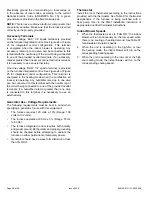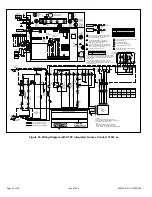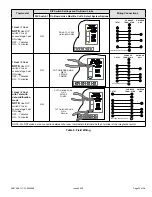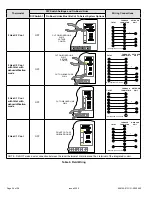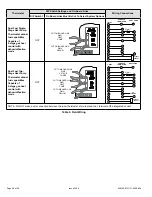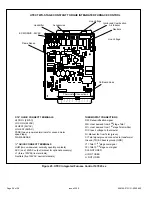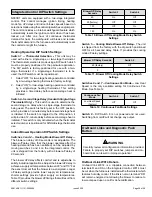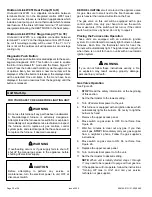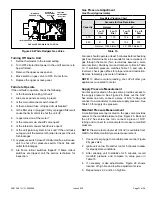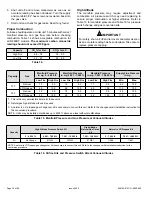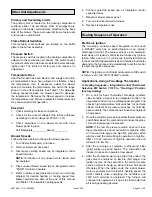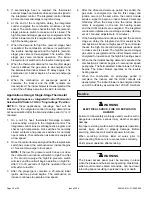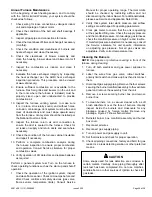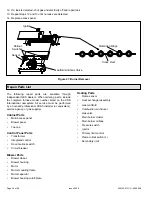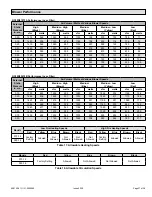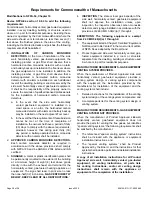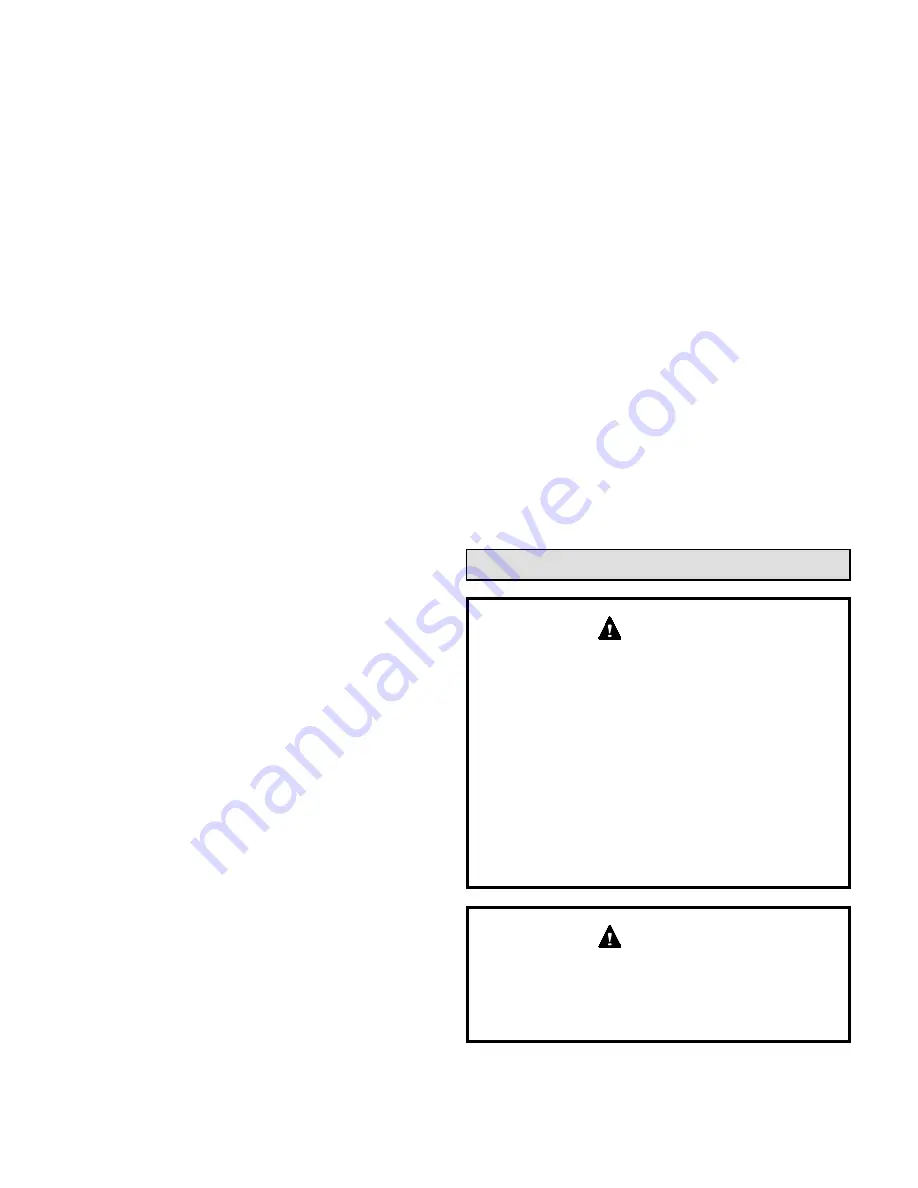
508145-01G / 31-5000660
Page 34 of 38
Issue 2220
5. If second-stage heat is required, the thermostat
second- stage heat contacts close and send a signal to
the integrated control. The integrated control initiates
a 30-second second-stage recognition delay.
6. At the end of the recognition delay, the integrated
control energizes the combustion air inducer at high
speed. The control also checks the high fire (second-
stage) pressure switch to make sure it is closed. The
high fire (second stage) gas valve is energized and the
indoor blower motor is energized for operation at the
high fire heating speed.
7.
When the demand for high fire (second stage) heat
is satisfied, the combustion air inducer is switched to
the low-fire heating speed and the high-fire (second-
stage) gas valve is de-energized. The low-fire (first-
stage) gas valve continues operation. The indoor
blower motor is switched to the low-fire heating speed.
8.
When the thermostat demand for low-fire (first stage)
heat is satisfied, the gas valve is de-energized and
the field-selected indoor blower off delay begins. The
combustion air inducer begins a 5-second postpurge
period.
9. When the combustion air post-purge period is
complete, the inducer and the HUM contacts are
deenergized. The indoor blower is de-energized at the
end of the off delay as well as the ACC terminals.
Applications Using A Single-Stage Thermostat
B - Heating Sequence -- Integrated Control Thermostat
Selection DIP Switch 1 ON in “Single-Stage” Position
NOTE:
In these applications, two-stage heat will be
initiated by the integrated control if heating demand has
not been satisfied after the field adjustable period (7 or 12
minutes).
1.
On a call for heat, thermostat first-stage contacts
close sending a signal to the integrated control. The
integrated control runs a self-diagnostic program and
checks high temperature limit switches for normally
closed contacts and pressure switches for normally
open contacts. The combustion air inducer is energized
at low speed.
2. Once the control receives a signal that the low pressure
switch has closed, the combustion air inducer begins
a 15-second pre-purge in low speed.
NOTE:
If the low fire pressure switch does not close
the combustion air inducer will switch to high fire. After
a 15 second pre-purge the high fire pressure switch
will close and the unit will begin operation on high fire.
After 10 to 20 seconds of high fire operation the unit
will switch to low fire.
3. After the pre-purge is complete, a 20-second initial
ignitor warm-up period begins. The combustion air
inducer continues to operate at low speed.
4. After the 20-second warm-up period has ended, the
gas valve is energized on low fire (first stage) and
ignition occurs. At the same time, the control module
sends a signal to begin an indoor blower 30-second
ON-delay. When the delay ends, the indoor blower
motor is energized on the low fire heating speed
and the HUM contacts are energized. The integrated
control also initiates a second-stage on delay (factory-
set at 7 minutes; adjustable to 12 minutes).
5. If the heating demand continues beyond the second-
stage on delay, the integrated control energizes the
combustion air inducer at high speed. The control also
checks the high fire (second stage) pressure switch
to make sure it is closed. The high fire (second stage)
gas valve is energized and the indoor blower motor is
energized for operation at the high fire heating speed.
6.
When the thermostat heating demand is satisfied, the
combustion air inducer begins a 5-second low speed
post-purge. The field-selected indoor blower off delay
begins. The indoor blower operates at the low-fire
heating speed.
7. When the combustion air post-purge period is
complete, the inducer and the HUM contacts are
deenergized. The indoor blower is de-energized at the
end of the off delay as well as the 120 ACC terminals
Service
ELECTRICAL SHOCK, FIRE, OR EXPLOSION
HAZARD.
Failure to follow safety warnings exactly could result in
dangerous operation, serious injury, death or property
damage.
Improper servicing could result in dangerous operation,
serious injury, death, or property damage. Before
servicing, disconnect all electrical power to furnace.
When servicing controls, label all wires prior to
disconnecting. Take care to reconnect wires correctly.
Verify proper operation after servicing.
WARNING
The blower access panel must be securely in place
when the blower and burners are operating. Gas fumes,
which could contain carbon monoxide, can be drawn
into living space resulting in personal injury or death.
WARNING

